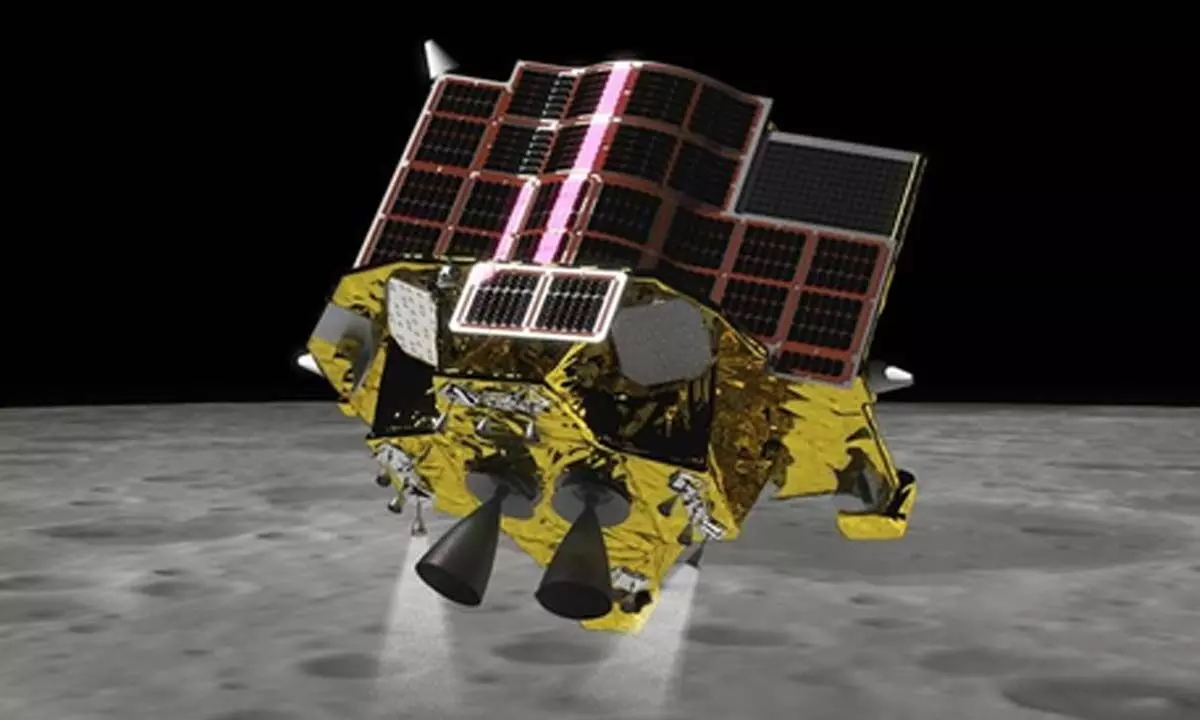Japan's lunar lander, X-ray mission to launch on Monday
Share :

After Chandrayaan-3's success, Japan's space agency is set to launch a lander and a X-ray mission on the lunar surface on Monday.
Tokyo: After Chandrayaan-3's success, Japan's space agency is set to launch a lander and a X-ray mission on the lunar surface on Monday.
The Japanese Aerospace Exploration Agency's (JAXA) SLIM (Smart Lander for Investigating Moon) aims to achieve a lightweight probe system on a small scale and use the pinpoint landing technology necessary for future lunar probes.
If successful, Japan will become just the fifth country to successfully soft-land on the moon, after Russia, US, China and India.
The mission will also place the X-Ray Imaging and Spectroscopy Mission (XRISM) in a satellite that will help scientists observe plasma in stars and galaxies.
The mission, originally scheduled to take off on Saturday, was postponed to Monday due to bad weather. It will now launch to the Moon on JAXA’s H2-A rocket from Yoshinobu Launch Complex at the JAXA Tanegashima Space Center.
“The launch of the H-IIA Rocket No. 47 carrying the X-ray Spectroscopy and Imaging Satellite (XRISM) and the Small Lunar Lander Demonstration Vehicle (SLIM) was postponed to August 27, but the weather is expected to worsen,” JAXA said in a statement.
“We will reassess whether the launch on August 28 will be possible or not, depending on the weather conditions from tomorrow onwards,” it added.
SLIM, also known as "Moon Sniper" in Japanese, is expected to arrive in lunar orbit 3 to 4 months after launch. If successful, the spacecraft will land on the slope of Shioli Crater, a relatively fresh, 300-metre-wide impact feature within Mare Nectaris, at 13 degrees south latitude and 25 degrees east longitude on the near side of the moon.
The SLIM lander aims to achieve a small scale, lightweight probe system and pinpoint landing technology, in addition to contributing to future lunar probes.
XRISM, a collaboration between NASA and JAXA and with cooperation from the European Space Agency (ESA), will observe X-rays released by extreme phenomena such as hot gas clouds enveloping galaxies and blasts from black holes.
“X-ray astronomy enables us to study the most energetic phenomena in the Universe. It holds the key to answering important questions in modern astrophysics: how the largest structures in the Universe evolve, how the matter we are ultimately composed of was distributed through the cosmos, and how galaxies are shaped by massive black holes at their centres,” said Matteo Guainazzi, ESA project scientist for XRISM, in a statement.















